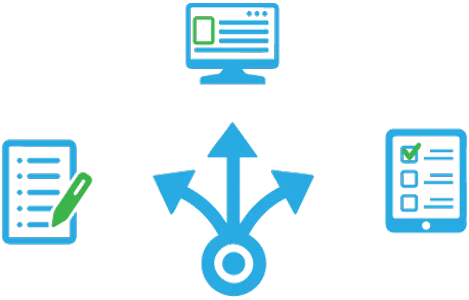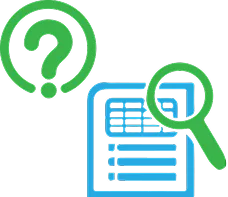
A Commitment to Lifecycle Feedback
What Is Lifecycle Feedback?
Lifecycle feedback is a strategic approach to collecting, understanding, and actioning customer insights across the entire customer lifecycle-from initial awareness through purchase, adoption, and advocacy. Traditional feedback programs focus on isolated touchpoints, leading to blind spots. A lifecycle feedback approach ensures insights flow across marketing, product, sales, and customer success-powering retention strategies, reducing churn, and enabling smarter decision-making.
Why Traditional Feedback Approaches Fall Short
Without strong feedback foundations, most organizations struggle with feedback that is:
- Disconnected: Different departments use different tools and methodologies
- Inconsistent: Measurement approaches vary across teams
- Reactive: Feedback is collected after problems arise
- Siloed: Insights don’t flow between departments
These limitations create blind spots in customer understanding and prevent organizations from delivering cohesive experiences across touchpoints.
Better Insights. Better Outcomes.
Organizations that implement feedback programs that align teams around the same customer insights have the opportunity to:
- Drive Higher Revenue Growth and Retention
- Remove Unnecessary Costs
- Accelerate innovation
- Experience Higher Employee Satisfaction
These are the outcomes of better decision-making enabled by comprehensive customer insights that span the entire lifecycle.
The Feedback Foundations Framework
The Four Pillars of Feedback Foundations
A robust lifecycle feedback program is built on four essential pillars:

Centralizing Feedback in Salesforce
Organizations that build their feedback foundations in Salesforce unlock significant advantages-ensuring a centralized environment and real-time insights that drive retention and revenue growth. Other advantages include:
- Single Source of Truth: All customer data and feedback in one place
- Enhanced Security: Leveraging existing security protocols
- Seamless Integration: Native connection to customer records
- Workflow Automation:Built-in process automation to reduce cost and effort
- Cross-Functional Visibility: Unified reporting across departments
A unified infrastructure eliminates data silos, enabling every department to access the same customer insights—leading to 41% faster revenue growth, 29% faster profit growth and 51% better customer retention. Source: Forrester Customer Experience
Implementation Roadmap

Phase 1: Establish Your Feedback Foundations
- Understand the current state of your customer feedback initiatives
- Identify the stakeholders in your organization that benefit from feedback alignment
- Map out the feedback that is most important to your organization
- Understand how your technology will work together to make the most of your feedback insights
- Determine baseline metrics and goals for your feedback program.

Phase 2: Initial Deployment
- Work with stakeholders to determine what feedback touchpoints will bring your organization the most value
- Determine the actions you want to take when feedback data is collected
- Outline the data you want to collect
- Determine how you will ask for the feedback
- Build workflows to take action on the data
The 9 Most Important Feedback Touchpoints That Make Up Your Feedback Foundation:
Introduction
For feedback to drive real business outcomes, it must be accessible to every GTM function-not just the team collecting it. Without proper integration and cross-functional alignment, insights get lost, action is delayed, and customer needs go unmet. By centralizing feedback in Salesforce, Survey Vista ensures that customer insights seamlessly flow between marketing, product, sales, and customer success-creating accountability and driving real-time decision-making. This is a collection of the most common feedback touchpoints across your customer lifecycle that align your GTM organization. Each section of this action plan outlines key questions to include, best practices to follow, and implementation strategies to get you started with your Feedback Framework.
1. Initial Lead Capture
Purpose: Gather baseline information about prospects
Key Questions to Include:
- Who are you?
- What challenges/opportunities are driving your interest?
- How did you hear about our company/product?
Best Practices:
- Keep the form short (5-7 fields maximum)
- Make only essential fields required
- Include dropdown options for standardization where appropriate
- Progressively capture data across touchpoints instead of all at once
- Enable pre-fill of known data (e.g., email, company)
- Include a privacy statement about how data will be used
Implementation Actions:
- A/B test layouts and designs
- Base questions on what data has proved most useful previously
- Ask your best sales people what discovery questions are most effective in uncovering needs and urgency
- For open questions, use SurveyVista’s sentiment analysis for deeper insights
- Map all questions into Salesforce across Opportunity and Contact record
2. Level of Interest & Qualification Form
Purpose: Assess prospect readiness and qualification after initial engagement.
Key Questions to Include:
- What specific challenge are you looking to solve?
- What results are you seeking to improve?
- What solutions have you tried or considered previously?
- What are your top 3 priorities in selecting a solution?
- Which features/capabilities are most important to you?
- What would successful implementation look like for your organization?
- What is your expected implementation timeline?
- What is your expected budget range for this solution?
- What is your role in the decision-making process?
- Who else is involved in the evaluation process?
Best Practices:
- Trigger this form after meaningful engagement (request for a demo)
- Use conditional logic to show relevant questions based on previous answers
- Include questions that align with your qualification framework (BANT, MEDDIC)
- Balance between gathering information and respecting the prospect’s time
- Offer value in exchange for providing information (relevant content, consultation)
Implementation Actions:
- Define your qualification criteria and scoring model
- Create branching logic based on industry, company size, and use case
- Set up automated notifications for sales when qualification thresholds are met
- Design follow-up sequences based on qualification level
- Establish feedback loops to refine qualification criteria over time
3. Win/Loss Analysis
Purpose: Understand factors influencing purchase decisions to improve sales effectiveness and product strategy.
Key Questions to Include:
- How would you rate your overall experience with our sales process?
- What were the primary factors in your decision?
- How would you rate our solution compared to alternatives you considered?
- What aspects of our sales process worked well/could be improved?
- What capabilities were missing or inadequate in our offering?
- How did our pricing/packaging compare to alternatives?
- What could we have done differently to win your business? (for losses)
- What ultimately convinced you to choose our solution? (for wins)
Best Practices:
- Conduct within 1 week of decision while memory is fresh
- Combine surveys with selective follow-up interviews for depth
- Share anonymized insights across product, marketing, and sales teams
- Create a systematic process for incorporating feedback into strategies
Implementation Actions:
- Create separate win and loss survey templates in Salesforce
- Set up automated triggers when opportunities are closed (won/lost)
- Establish a monthly cross-functional review of win/loss data
- Develop a categorization system for reasons won/lost
- Create dashboards showing win/loss trends by product, segment, competitor
- Implement a process to validate sales rep perceptions with customer feedback
- Escalate and alert sales managers if the overall experience scores are low
4. Onboarding Form: Sales to Customer Success Handoff
Purpose: An internal form to ensure smooth transition from sales to customer success with complete context and expectations.
Key Questions to Include:
- What specific results is the customer expecting to achieve?
- What timeline has been communicated for implementation and value realization?
- What potential challenges or risks were identified during the sales process?
- Who are the key stakeholders and their roles in implementation?
- What promises or commitments were made during the sales process?
- What competitive alternatives did they consider and why did they choose us?
- Are there any unique requirements or customizations needed?
Best Practices:
- Pre-fill values with data from Salesforce collected during the sales process
- Include input from the customer to validate expectations
- Make this a required step in the sales-to-CS handoff process
- Review the insights with the customer during kickoff
- Update as new information emerges during onboarding
- Use this as a reference point for success metrics throughout the customer lifecycle
Implementation Actions:
- Create a standardized handoff template process in Salesforce
- Build automation to notify CS of new closed-won opportunities
- Link the onboarding information to the customer health scoring system
- Create dashboards to track onboarding progress and milestone completion
- Establish feedback loops to identify gaps in the sales-to-implementation process
5. Support Satisfaction
Purpose: Evaluate support effectiveness and identify improvement opportunities.
Key Questions to Include:
- Did the proposed solution resolve your issue?
- Was your issue resolved on the first attempt?
- How would you rate the performance of our support process?
- How would you rate the timeliness of the response?
- What could we have done to improve your support experience?
- Would you like someone to follow up regarding this issue?
Best Practices:
- Keep surveys very brief (3-5 questions maximum)
- Send immediately after case resolution
- Include both quantitative ratings and qualitative feedback options
- Follow up on negative ratings quickly (within 24 hours)
- Track trends by support agent, issue type, and customer segment
- Close the loop by sharing how feedback improves support processes
- Include support metrics in overall customer health scoring
Implementation Actions:
- Integrate support platform with Salesforce for unified data
- Set up automated survey distribution after case closure
- Create alert workflows for low satisfaction scores
- Use Salesforce Case or Actions to manage the follow-up of any issues arising from the survey
- Develop dashboards comparing CSAT across product areas and issue types
- Establish regular reviews of support feedback with product teams
- Implement service recovery protocols for dissatisfied customers
6. In-Product Feedback
Purpose: Capture contextual feedback during product usage to improve user experience and feature development.
Key Questions to Include:
- How easy was it to use this feature? (1-5 scale)
- What were you trying to accomplish?
- Did you encounter any obstacles or confusion?
- What would make this feature/process more valuable to you?
- How important is this feature to your overall success with our product? (1-5 scale)
- Would you like to participate in future user research on this area?
Best Practices:
- Make feedback collection unobtrusive but easily accessible
- Trigger contextual feedback requests at appropriate moments
- Present each question separately
- Keep forms focused on specific features or workflows
- Vary feedback requests to prevent survey fatigue
- Connect feedback to specific user segments and use cases
- Create visible “feedback loops” showing how input drives improvements
Implementation Actions:
- Push product feedback into Salesforce at the contact level
- Create logic to trigger specific feedback requests based on user behavior
- Develop categorization system for feature requests and issues
- Establish feedback review process with product management
- Build dashboards showing feedback volume and sentiment by feature area
- Create notification system for product teams when feedback thresholds are met
7. Referral Request
Purpose: Identify and activate promoters to generate qualified referrals.
Key Questions to Include:
- How likely would you be to refer us to others in your industry? (1-5 scale)
- Would you be willing to serve as a reference for prospective customers?
- What aspects of our solution would you highlight when referring others?
- Could you provide names of specific individuals who might benefit from our solution?
- What would make you more comfortable referring our solution to others?
Best Practices:
- Trigger referral requests from established, satisfied customers
- Time requests after successful milestones or positive experiences
- Make the referral process as frictionless as possible
- Acknowledge and thank customers for referrals promptly
- Consider incentives for successful referrals where appropriate
- Follow up to inform referrers of outcomes (with permission)
Implementation Actions:
- Create triggers in Salesforce to identify referral candidates
- Develop email templates and in-app prompts for referral requests
- Build tracking system for referral sources and conversion rates
- Establish a referral acknowledgment and reward process
- Create a lead and associated campaign
- Create dashboards showing referral activity and value generated
- Implement closed-loop reporting to inform referrers of outcomes
8. Net Promoter Score
Purpose: Measure customer loyalty and identify promoters, passives, and detractors.
Key Questions to Include:
- How likely are you to recommend us to a colleague or peer? (0-10 scale)
- What is the primary reason for your score?
Best Practices:
- Embed NPS question in email invite
- DON’T use colors and guides to lead the witness
- Establish consistent measurement cadence (quarterly recommended)
- Segment results by customer type, product line, and tenure
- Follow up with detractors quickly through appropriate channels
- Create specific playbooks for addressing detractor feedback
- Combine NPS with usage data and other metrics for a comprehensive health score
- Share NPS insights across the organization with specific action items
Implementation Actions:
- Implement automated NPS collection into Salesforce
- Create segmentation rules for distributing surveys
- Develop alert workflows for detractor responses
- Build trend analysis dashboards by customer segment
- Establish cross-functional process for reviewing and acting on feedback
- Create customer health scoring model incorporating NPS and other metrics
- Implement closed-loop processes for all respondents
9. Customer Quarterly Business Review
Purpose: Measure customer loyalty and identify promoters, passives, and detractors. REPETITION FROM 8
Key Questions to Include:
- How have our solutions contributed to your key business objectives this quarter?
- What specific business outcomes have you achieved with our support?
- Are we helping you solve the most critical challenges in your business?
- On a scale of 1-5, how would you rate the overall value we’re delivering?
- Which of our solutions or services have been most impactful for your team?
- Are there any solutions that aren’t meeting your expectations?
- How well do our solutions align with your organization’s strategic goals?
- What are the top strategic priorities for your business in the coming quarter?
- Have you encountered any usability issues or friction points?
- What additional features or improvements would enhance your user experience?
- What major challenges do you anticipate in the coming quarter?
- What additional support or resources would help you derive more value?
- Are there any skill gaps or training needs we could help address?
- Are we meeting your expectations for communication and responsiveness?
- What are we doing exceptionally well?
- Are there any unmet needs or overlooked opportunities?
Best Practices:
- Set expectations with customers to prepare for a QBR ahead of time during the onboarding process
- Have different users participate in the QBR at different stages in the customer lifecycle to gather a well-rounded perspective
- Balance quantitative and qualitative insights
- Create questions that provide actionable intelligence
- Ensure questions align with key business objectives
- Cross-reference answers with other data found in your CRM
- Schedule a follow-up call to go over the key insights with your customer
Implementation Actions:
- Automate QBR survey requests, rotating to different key account users each quarter
- Set time aside to review QBR data and prepare for a live review and summarize key insights.
- Involve internal subject matter experts to determine if any action is needed.
- Schedule a live customer review to talk through QBR insights and outline action steps
- Include QBRs in CRM objects at both the account and contact level for other team members to review as they care for the account
 Integration and Cross-Functional Alignment
Integration and Cross-Functional Alignment
To maximize the value of these feedback touchpoints, consider these additional implementation actions:
- Create business rules to prevent survey fatigue and respect opt-outs
- Establish a cross-functional feedback review committee with representatives from all departments
- Use Salesforce as a central insights repository accessible to all teams
- Create standardized reporting templates for sharing feedback insights
- Implement closed-loop notification systems to inform customers of actions taken
- Develop training programs to build feedback literacy across the organization
- Establish clear ownership and accountability for each touchpoint
- Create metrics to measure the impact of feedback-driven improvements

Phased Implementation Approach
Implementing a full funnel feedback program doesn’t happen overnight. A structured approach ensures adoption, maximizes impact, and avoids common pitfalls like survey fatigue or lack of follow-through. Here’s how to roll out your program in a way that drives long-term success:
Phase 1: Foundation (Weeks 1-4)
- Implement touchpoints #1, #4, and #5 (Lead Capture, Onboarding, Support CSAT)
- Establish Salesforce as central feedback repository
- Create basic reporting and alert workflows
Phase 2: Expansion (Weeks 5-8)
- Add touchpoints #3, #6, and #8 (Win/Loss, In-Product, NPS)
- Develop cross-functional review processes
- Implement more sophisticated reporting and trend analysis
Phase 3: Optimization (Weeks 9-12)
- Add touchpoints #2, #7, and #8 (Qualification, Referrals)
- Implement comprehensive customer health scoring
- Develop advanced automation and predictive analytics
By following this phased approach and focusing on these key touchpoints, you’ll build a comprehensive feedback system that spans the entire customer journey and drives measurable business outcomes.
Are your feedback foundations strong enough to drive GTM success?
Take our comprehensive Feedback Foundations Assessment to uncover gaps, benchmark against industry leaders, and receive expert recommendations to improve customer retention and revenue impact. Don’t let siloed feedback hold your business back-start your assessment today.
